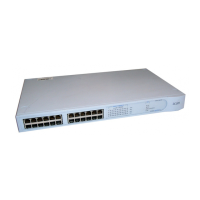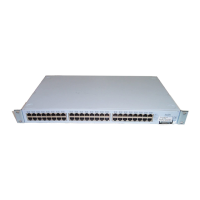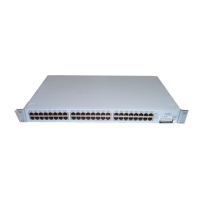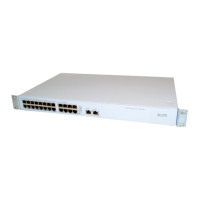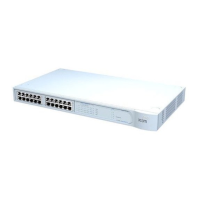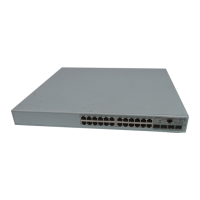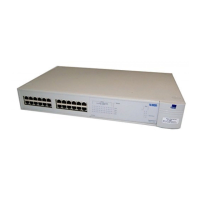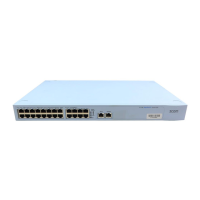Aggregated Links 25
Implementing
802.3ad Aggregated
Links
LACP can be enabled or disabled on a per port basis. You can implement
802.3ad aggregated links in two ways:
■ Manual Aggregations — You can manually add and remove ports to
and from an aggregated link via Web commands. However, if a port
has LACP enabled, and if a more appropriate or correct automatic
membership is detected by LACP, it will override the manual
configuration.
■ LACP Automatic Aggregations — If LACP detects the two active ports
sharing the same partner device, and if no matching pre-configured
aggregated links exist, LACP will automatically assign both ports to
form an aggregated link with the partner device.
If you have an existing single port connection between two devices,
this automatic behavior allows quick and easy addition of extra
bandwidth by simply adding an extra physical link between the units.
The Spanning Tree costs for a port running LACP is the cost assigned for
an aggregated link running at that speed. As required by the IEEE Std
802.3-2002 (incorporating 802.3ad), no changes in cost are made
according to the number of member links in the aggregated link.
Aggregated Links and
Your Switch
When any port is assigned to an aggregated link (either manually or via
LACP) it will adopt the configuration settings of the aggregated link.
When a port leaves an aggregated link its original configuration settings
are restored.
■ Your Switch supports a single aggregated link comprising:
■ both 10/100/1000 ports
or
■ both SFP ports
or
■ one SFP port and one 10/100/1000 port
■ A LinkUp / LinkDown trap will only be sent for individual links. The
Traps will not be sent for an aggregation.
When setting up an aggregated link, note that:
■ The ports at both ends of a member link must be configured as
members of an aggregated link, if you are manually configuring
aggregated links.

